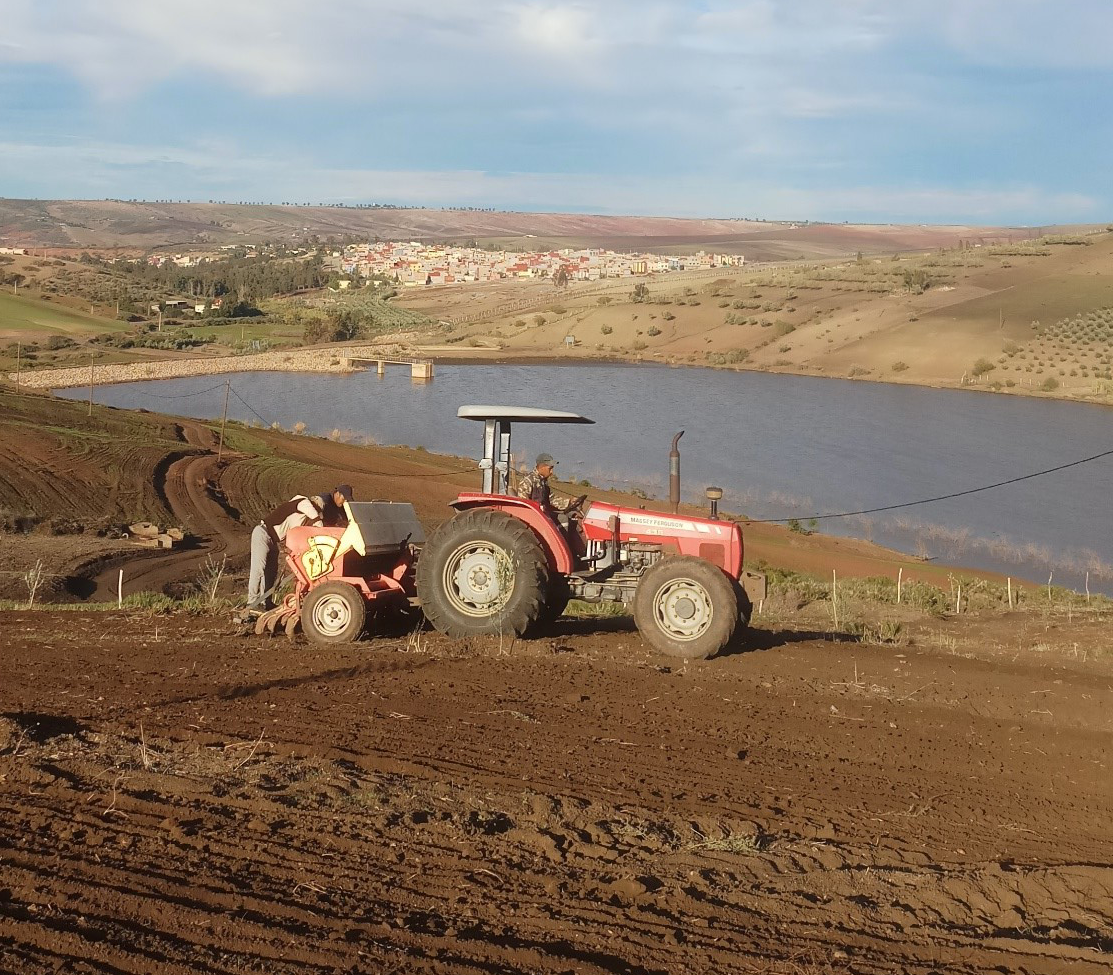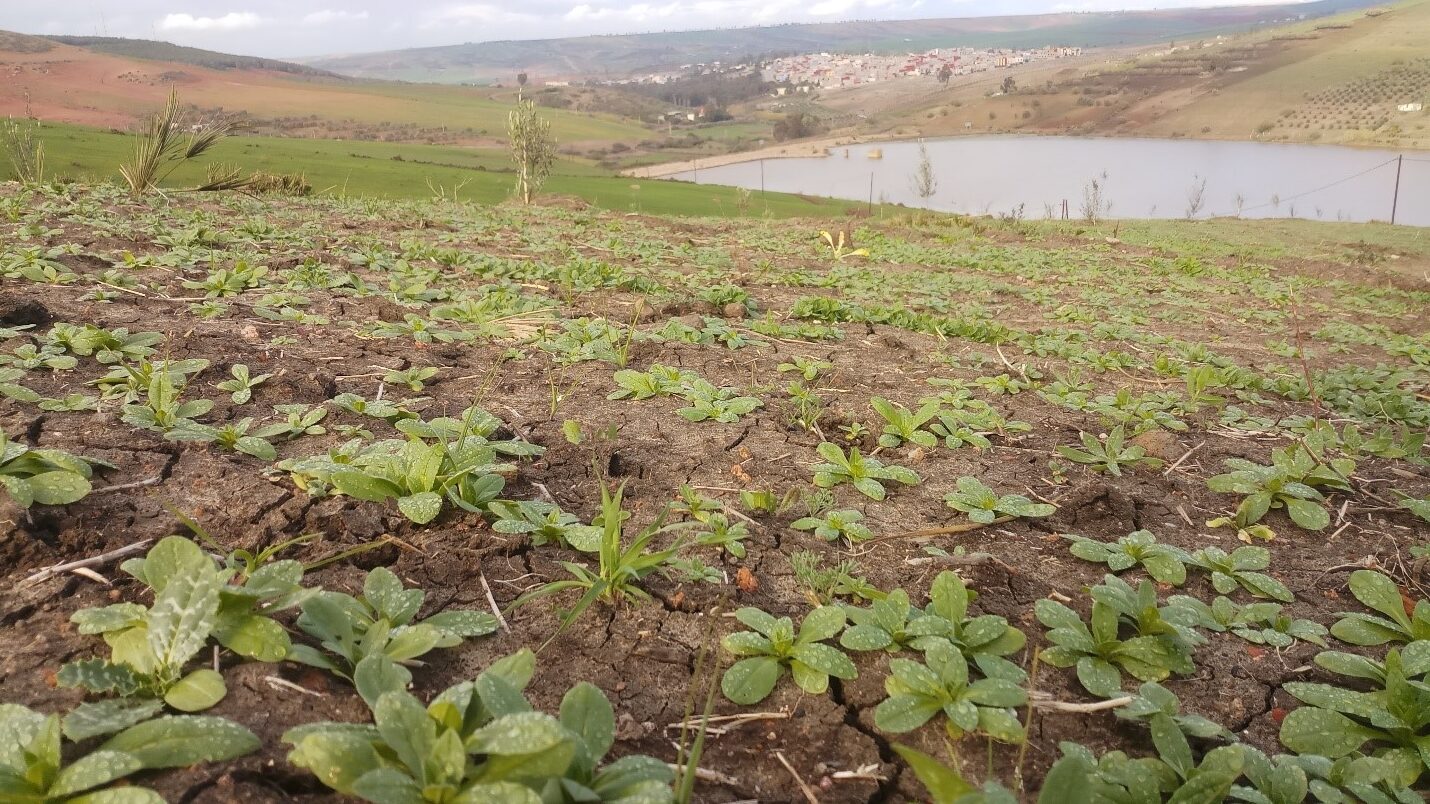On-farm demonstration trial of camelina was successfully planted in the Rammani region of Morocco on 13-Dec-2022 using locally available seeders. This marks a significant step forward for farmers in the region who are looking to diversify their crops and improve yields
Before the planting of the camelina, local farmers, farm workers, landowners, researchers, and service providers collaborated in co-designing farming systems and cultivation practices for the crop. This collaborative approach ensured that the cultivation practices were tailored to local conditions and were optimized for maximum yields.

After considering the available local cereal planter in the region (model SOLA Tricombi-294-ESP), it was decided to mix the camelina with carrier material, such as barley semolina, for planting very small seed crops like camelina. The optimal mixing ratio was found to be 1:1 proportion by weight. The spacing adapted was 14.25 cm between rows for camelina as the sole crop.

Fortunately, rain started immediately after planting, and the soil moisture level was optimal for germination, resulting in good germination of the planted seeds. Even though there was less rain during the initial period of the crop, after germination, recent good rains had helped the crop establish better.
Camelina is a crop that has been gaining popularity in recent years due to its versatility and potential as a biofuel feedstock. It is a drought-resistant plant that can grow in marginal lands, making it an ideal crop for regions like Morocco that are facing water scarcity and have limited arable land.

The on-farm demonstration trial of camelina is expected to provide valuable insights into the crop’s cultivation practices and its potential for improving farmers’ livelihoods in the region. The success of the trial is a testament to the effectiveness of collaborative approaches to farming and highlights the importance of locally adapted farming practices in improving agricultural productivity and sustainability.
SUBSCRIBE TO A NEWSLETTER
Funded by the European Union. Views and opinions expressed are however those of the author(s) only and do not necessarily reflect those of the European Union or the European Research Executive Agency. Neither the European Union nor the granting authority can be held responsible for them.